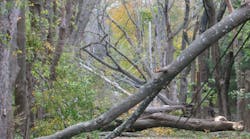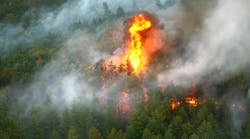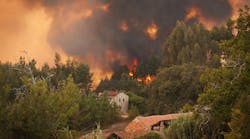Just a couple of issues back I wrote:
VM, forestry, line clearance or whatever you happen to call the group tasked with keeping trees out of power lines is the Rodney Dangerfield of utilities – that is they get “no respect”
For those of you working in UVM, a setting dominated by engineers, there was probably a lot of nodding agreement. However, we, in the UVM industry, must take some responsibility for how we are regarded.
Wikipedia has this to say about engineers. “Engineers use their knowledge of science, mathematics, logic, economics, and appropriate experience or tacit knowledge to find suitable solutions to a problem. Creating an appropriate mathematical model of a problem allows them to analyze it (sometimes definitively), and to test potential solutions.” Can we say the same about utility foresters/arborists?
The June T&D World Vegetation Management supplement suggests, increasingly, the answer is yes. There were a number of articles based on solid science and analysis that if emulated can’t help but increase the credibility of vegetation managers in the eyes of their engineer peers from just ‘tree guys and gals’ to full-fledged colleagues. If you haven’t read this supplement I encourage you to read it - from cover to cover. I’m going to highlight a number of articles. You’ll find links to those articles in the Highlights section below.
One of the difficulties we face in VM is that the more successful we are at our jobs the less there is to see and measure. Can you measure events that didn’t occur? We need to look for and track data that will support our actions as Dave Goodson did and stated in "Ahead of the Storm." He states with respect to Superstorm Sandy “The utility found that in areas where enhanced tree trimming had been performed, the number of outages decreased by 50%.” Considering CL&P has embarked on a five year program including enhanced tree trimming, the opportunity to make this comparison exists for a limited time. While the focus in Connecticut has been on how to reduce extended outages, I’m sure the decision to spend an additional $300 million on CL&P’s plan did not come easily to the regulators. Consequently, it would be instructive to also have a financial assessment comparing avoided restoration costs to the enhanced tree trimming costs. Perhaps there is a positive rate of return. Or perhaps it is cost neutral. If either one of these outcomes could be demonstrated it would serve to put the regulators at ease with their support for the plan and increase trust in CL&P’s management.
I need to thank Eric Woodyard of PG&E for his article “Safety and Reliability.” It is a tremendous validation of my June 2013 VMI statements “arborists need to investigate tree-caused faults to obtain information on species, more detail on mode of failure” and “that this data is foundational to actionable outage mitigation strategies.” Woodyard reports “(w)here reliability projects have taken place, vegetation-related outages have decreased 44% on average.” There’s something else raised in this article, which should be staggering to researchers. What is considered large sample statistics? How many sample points do you need? PG&E annually investigates about 3000 vegetation-related outages and the database now has over 20,000 records! Electric utilities consist of many miles of line; have enormous tree exposure along those lines and encounter just about every environmental condition imaginable. It makes for big numbers and these offer great opportunities for insight through statistical analysis, with a high degree of confidence.
Craig Allen’s “A Wise Investment” article presents a logical approach to improving reliability by ensuring efforts are dedicated to where a dollar will obtain the largest return in improved reliability. His work illustrates what is possible when you have engineering and vegetation management teams working together – solid data you can take to the bank or in this case, the regulator. The rigor of the data raises, challenges and, I believe, addresses a commonly held regulator belief that all customers are entitled to a similar level of service. National Grid demonstrates that under constrained funding this ideal can only be obtained by sacrificing system reliability as a whole – that is everyone receives a similar but substantially poorer level of service. It’s only data like Allen has presented that has the power to challenge cherished platitudes and replace them with realistic, achievable expectations.
If we wish to be credible with engineers and senior utility managers, we have to be able to make reliable predictions for funding needs and reliability. Rob Young in his article “Sustainability Requires Forward Thinking” presents data and a funding plan that facilitates communicating the resource needs both internally and externally. In my view, of particular value are Young’s sustainability classifications. Not all areas around a power line require active management. At the other end of the classification system is the area requiring active management. As Rob points out technology advances have greatly facilitated the capture, management and presentation of large volumes of data in both tabular and spatial formats.
Having spoken of developing actionable projections, what happens when Mother Nature throws us a curve - a deviation from norms? That is the focus of the last article I’m going to highlight, “Ash Trees Under Siege” by Scott Bennett of Indiana Michigan Power. If you need a template for justifying VM funding, you’ll find it in this article. You need to strike in the financial, reliability and safety domains with unassailable data; you need to quantify and make risks explicit for in doing so you transfer ownership of the problem. Bennett covers it all. He illustrates a pro-active approach to managing decadent ash trees, while an enormous additional cost, will ultimately cost less than a reactive response. He provides a timeline for the evolution of risk and the window for successfully addressing it. In speaking with Scott I learned that his management is strongly supports the pro-active approach. Similarly, the data should provide the regulator the evidence needed to justify the additional expenditure to the ratepayers. Of course, if the regulator declines to provide the funding it will be very difficult to try to lay blame for deteriorating reliability on Indiana Michigan Power.
Bennett’s work raises another regulatory issue. While the mortality caused by the emerald ash borer is an event outside of the norm, we can’t say that pest infestations, drought or other conditions that cause increased tree mortality are that unusual. For this reason, I think there needs to be first, recognition of the potential impact and secondly, a regulatory mechanism for quantifying the cost of emerging VM issues and obtaining regulatory clearance for a timely response. The utility needs to be assured that in funding prudent pro-active VM that it will be reimbursed for those actions. Some jurisdictions have an accumulating emergency fund against which utilities can charge storm restoration costs. Perhaps a similar fund is required to speedily and effectively address specific events that result in above average tree mortality.
Reading about the excellent work being done to obtain a better understanding of VM issues and the impact on reliability has me jazzed. VM and vegetation managers are finally taking their rightful place at the utility table. Solid research and data like that presented in the VM Supplement can’t help but accelerate that process.


